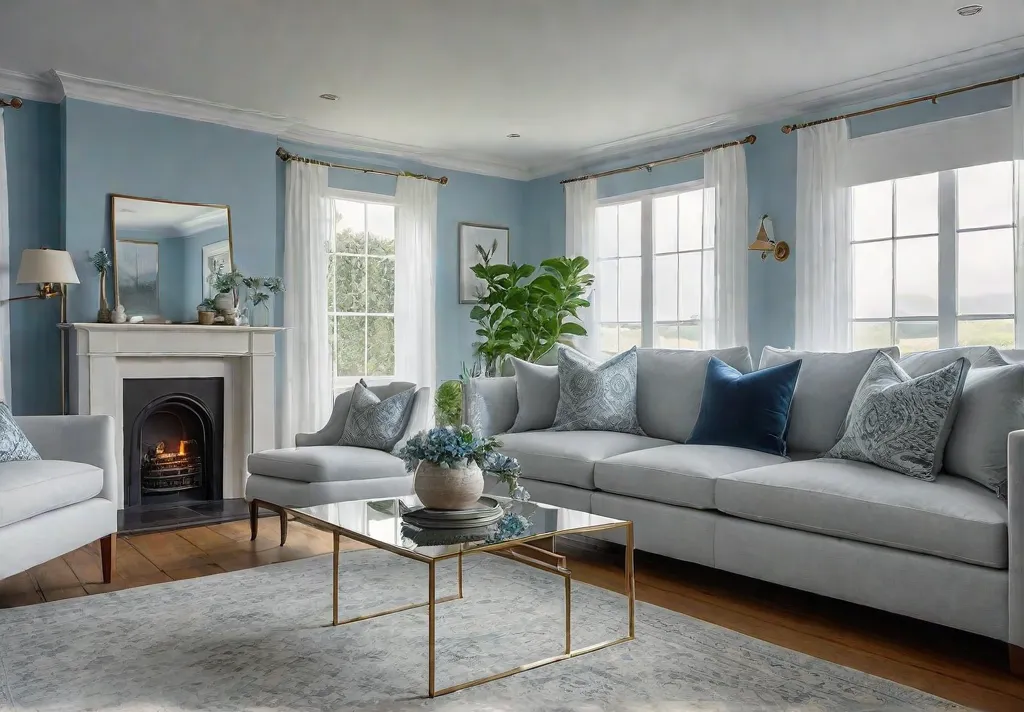“The spaces we love have not a fixed plan…they are like hints of infinite freedom.” – Gaston Bachelard
Have you ever walked into a beautifully designed living room and felt an immediate calm wash over you? A well-curated space can uplift our spirits, inspiring us to linger, relax, and embrace the present moment. But what if your living room is on the smaller side? Fear not, for with a few thoughtful design choices, even the most compact spaces can be transformed into expansive, airy oases.
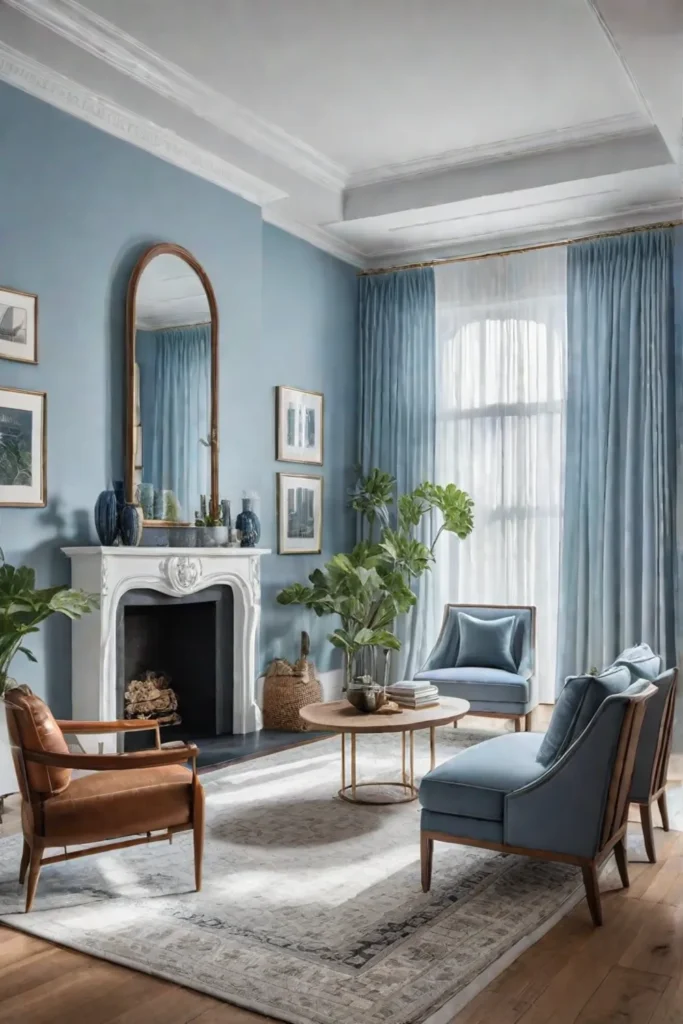
In this article, we’ll explore optical illusions, color schemes, furniture arrangements, and more, unveiling ten transformative tricks to make your small living room feel remarkably spacious. Whether you’re a homeowner seeking to maximize your living area or a design enthusiast with a penchant for cozy yet open spaces, these insights will empower you to create an environment that celebrates functionality and aesthetic allure.
Unleashing the Power of Optical Illusions
Optical illusions are not merely visual trickery but powerful tools that can profoundly influence our perception of space. By harnessing the principles of these captivating illusions, we can unlock the secrets to crafting a living room that defies its physical boundaries.
One of the most effective techniques is to leverage vertical lines and patterns. Hanging long, floor-to-ceiling drapes or incorporating striped wallpaper can draw the eye upwards, creating the illusion of soaring ceilings. This effect is further amplified by strategically placing mirrors, which reflect light and make the perception of depth as if the room extends beyond its physical walls.
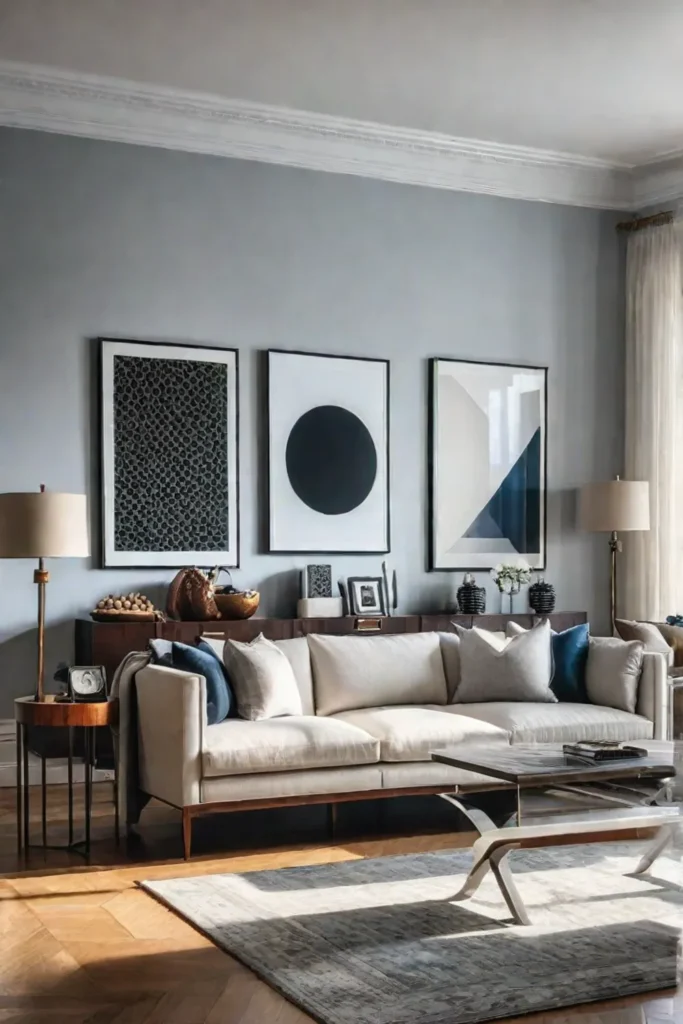
Embracing high-contrast colors and patterns can make a small living room feel larger. Bold, geometric designs or vibrant accent walls can capture the eye, draw it inward, and create a sense of depth that belies the room’s dimensions.
The Magic of Color: Enhancing Spaciousness
Color choices play a pivotal role in shaping the perceived size of a living room. By understanding the psychological impact of different hues, we can create a harmonious palette that seamlessly blends with optical illusions and spatial design principles.
Light, neutral tones can remarkably make a room feel more open and airy. Painting the walls in a soft, creamy white or a gentle gray can instantly create the illusion of expansiveness. Alternatively, embracing a monochromatic or analogous color scheme can foster a sense of visual continuity, allowing the eye to flow effortlessly from one element to the next, further enhancing the perception of space.

Incorporating reflective surfaces, such as glossy coffee tables or metallic accents, can amplify the effects of color by bouncing light around the room, creating a sense of depth and luminosity.
The Art of Furniture Arrangement: Maximizing Flow
The strategic placement of furniture can profoundly influence the perceived size and functionality of a small living room. By selecting appropriately scaled pieces and arranging them to promote circulation, we can create a sense of openness and invite the eye to wander freely.
Opt for a small-scale sofa or loveseat, as oversized furniture can overwhelm the space and make it feel even more cramped. Placing larger pieces against the walls can create a more open, central area, allowing unobstructed movement and visual flow.
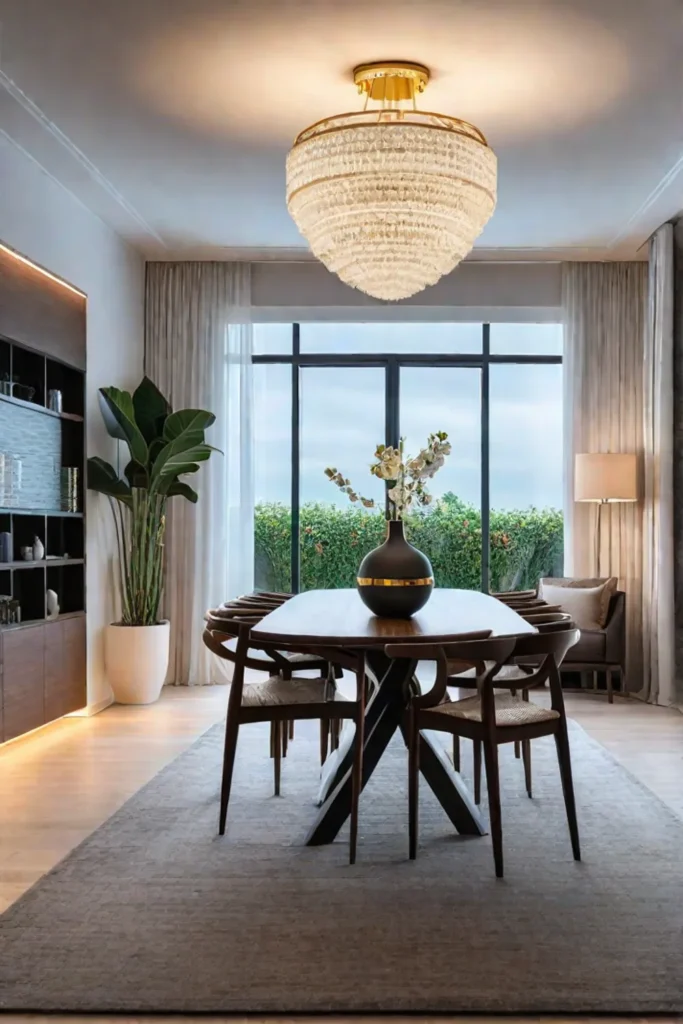
Incorporate multi-functional and space-saving furniture pieces, such as nested coffee tables or ottomans with hidden storage, to maximize utility without compromising style or spaciousness.
Illuminating the Way: The Power of Lighting
Lighting is a transformative element that can significantly impact the perception of space in a small living room. By layering different types of lighting and strategically positioning light sources, we can create depth, dimension, and a sense of expansiveness that transcends the room’s physical boundaries.
Maximize natural light by using sheer curtains or placing mirrors opposite windows, allowing the sunlight to flood the space and create a sense of airiness. Incorporate recessed or cove lighting to create the illusion of height and depth, drawing the eye upwards and outwards.

Strategically place floor lamps or wall sconces to draw the eye inward, creating focal points that add visual interest and depth. By layering ambient, task, and accent lighting, you can craft a dynamic, multi-dimensional environment that feels spacious and inviting.
Mirrors: Portals to Infinite Possibilities
Mirrors are versatile design tools that can create the illusion of a larger living room. By strategically placing mirrors, we can reflect light, make the perception of additional rooms or windows, and add visual interest and depth to the space.
Hang a large, floor-to-ceiling mirror on a focal wall to create the illusion of depth, as if the room extends beyond its physical boundaries. Place a mirrored coffee table or end tables to reflect light and make the perception of a more open space.
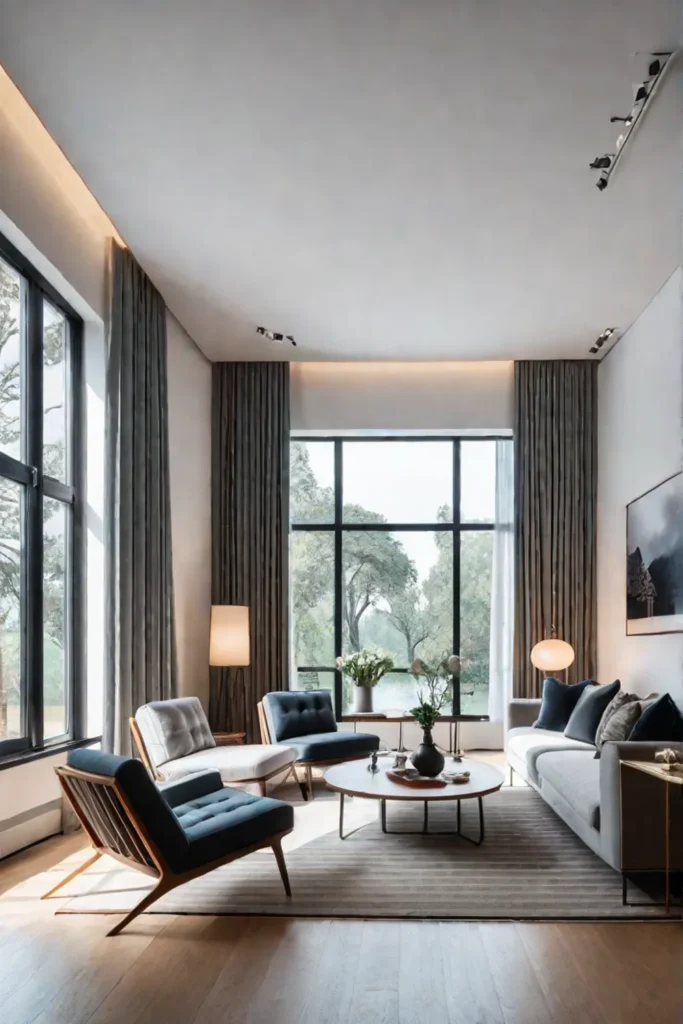
Incorporate a gallery wall of smaller, framed mirrors to add visual interest and the illusion of additional windows, further enhancing the sense of spaciousness.
Reaching for the Skies: Maximizing Vertical Space
In a small living room, every inch of vertical space is precious real estate. We can draw the eye upwards by incorporating tall, vertical furniture and decor elements, creating the illusion of soaring ceilings and a more expansive environment.
Place a tall, slender bookcase or shelving unit in a corner to create a striking vertical accent that draws the eye upwards. Hang long, floor-to-ceiling curtains to accentuate the room’s height and create a sense of grandeur.
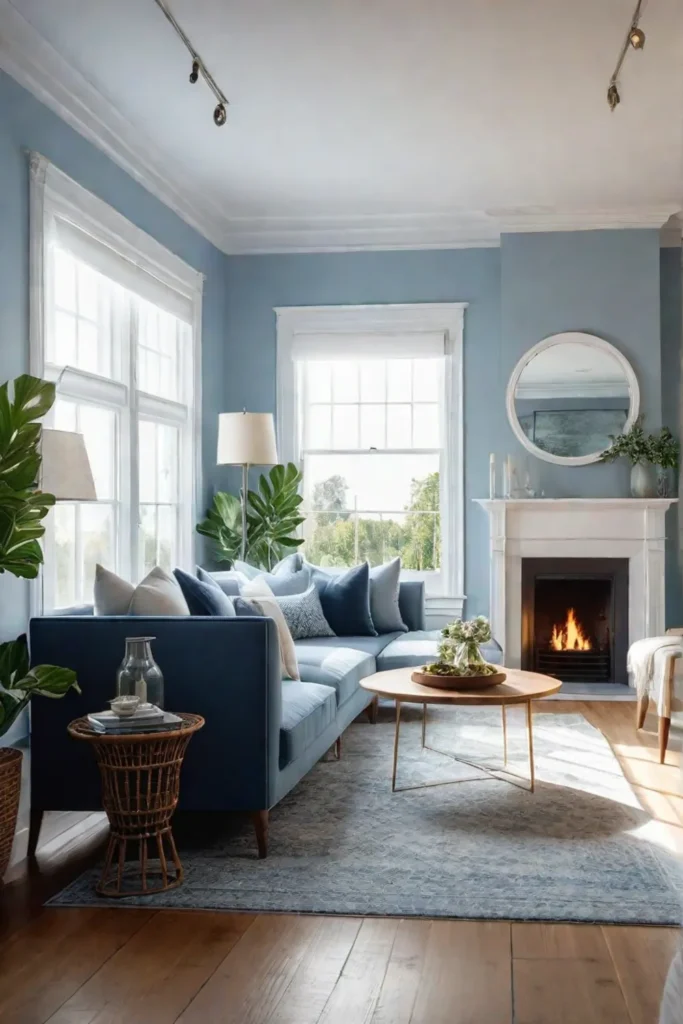
Incorporate a tall, statement-making floor lamp or pendant light to further emphasize the vertical dimension. This will create a focal point that commands attention and adds depth to the space.
Embracing Minimalism: The Art of Decluttering
In pursuing spatial harmony, embracing a minimalist approach and decluttering the living room can be a game-changer. By creating a streamlined, organized environment, we can foster a sense of openness and spaciousness that allows the eye to breathe and the mind to find tranquility.
Choose a sleek, low-profile sofa or loveseat that does not overwhelm the space with bulky forms. Incorporate multi-functional furniture, such as ottomans with hidden storage, to minimize clutter while maximizing utility.
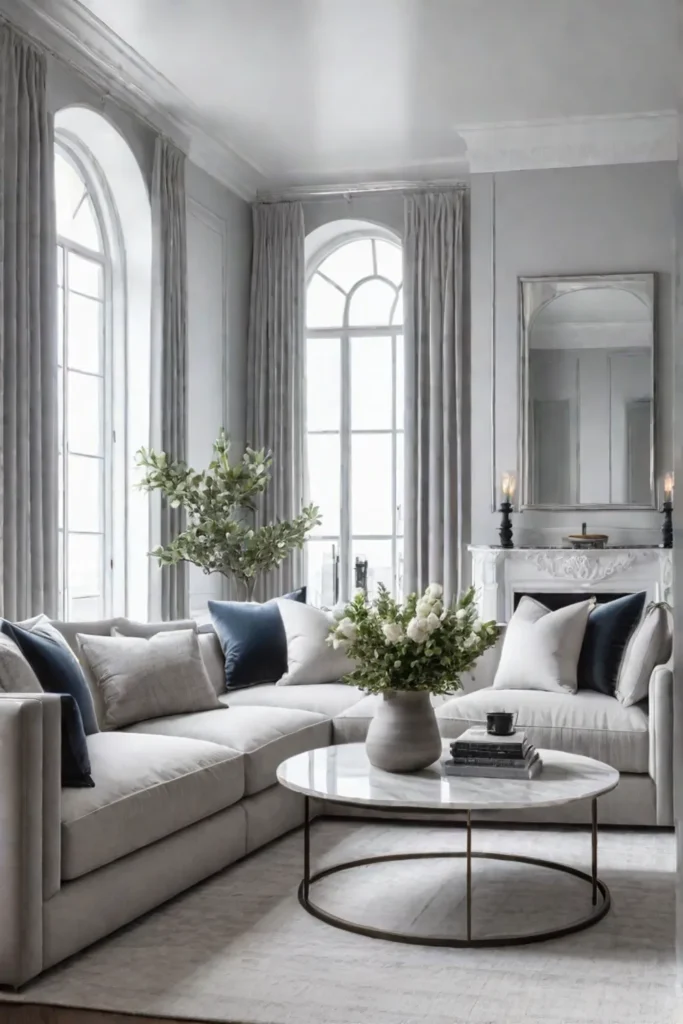
Streamline decor and accessories, focusing on carefully curated pieces that add visual interest without creating a cluttered aesthetic. By embracing the principles of minimalism, we can make a clean, uncluttered look that enhances the perception of space and fosters a sense of calm and serenity.
Textures and Patterns: Adding Depth and Dimension
The thoughtful incorporation of textures and patterns can profoundly impact the perception of space in a small living room. By leveraging these design elements, we can create the illusion of depth and dimension, transforming the space into a visually captivating and expansive oasis.
Incorporate a large, plush area rug with a subtle pattern to ground the space and create a sense of cohesion. The rug’s textural elements can add visual interest and depth, while the pattern can subtly guide the eye inward, enhancing the perception of spaciousness.

Choose a high-gloss or mirrored coffee table to reflect light and create the illusion of depth, as if the room extends beyond its physical boundaries. Textured pillows or throws can add visual interest and depth to the space, inviting the eye to linger and explore the intricate details.
Patterns with depth, such as stripes or geometric designs, can further enhance the illusion of a larger space, creating the perception of additional dimensions and visual intrigue.
Conclusion: Embracing the Art of Spatial Transformation
By embracing the power of optical illusions, color schemes, furniture arrangement, lighting, mirrors, vertical space, minimalism, and thoughtful use of textures and patterns, we can transform even the most compact living rooms into expansive, airy oases. These design principles not only enhance the perception of space but also create environments that are both visually captivating and deeply inviting.
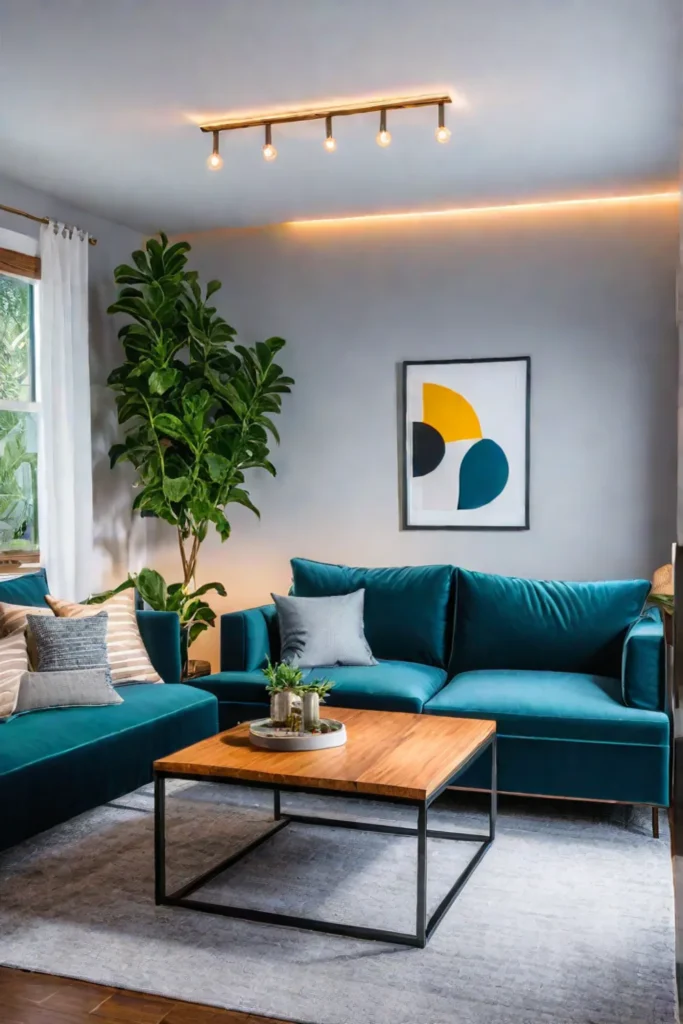
Remember, the key to designing a small living room is approaching the space with a keen eye for detail and a willingness to embrace unconventional solutions. By combining these transformative tricks with your unique personal style, you can craft a living room that transcends its physical boundaries, becoming a sanctuary where you can truly unwind, connect with loved ones, and embrace the essence of home.
So, take a deep breath, let your creativity flow, and embark on a journey of spatial transformation. With each thoughtful design choice, you’ll be one step closer to creating a living room that feels like an infinite expanse, a true reflection of your style, and a testament to the power of design to uplift the human spirit.
